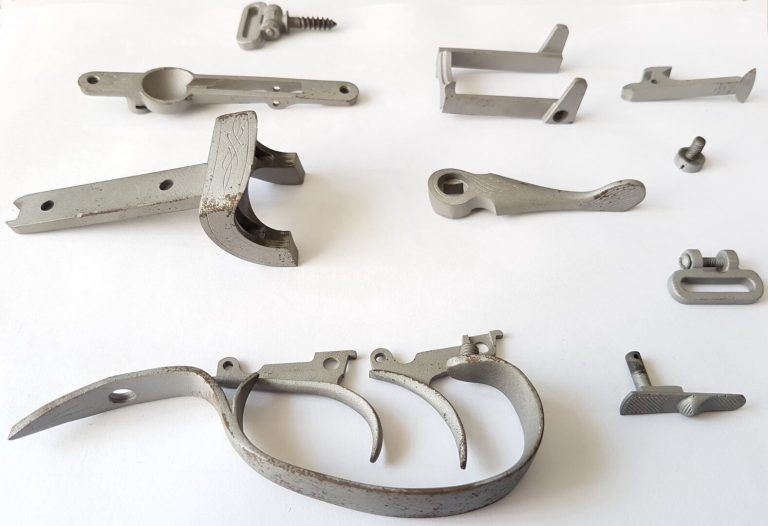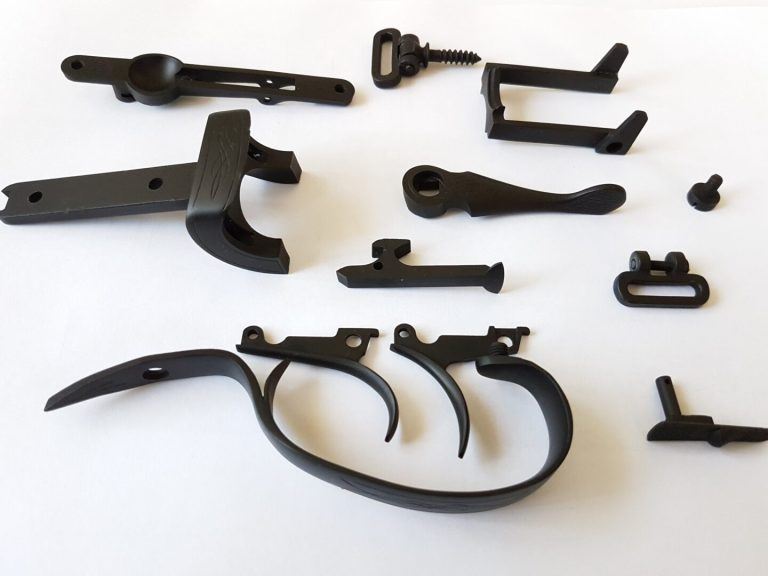Oxidation of metals
Oxidation
Modern metalworking knows many ways to improve the appearance of steel (cast iron) products and extend their service life. This can be achieved using a procedure such as oxidation.
Oxidation (blackening, bluing) is the creation of an oxide film on the surface of steel (cast iron) products as a result of an oxidation-reduction reaction. Oxidation is mainly used to obtain protective and decorative coatings, as well as to form dielectric layers.
OXIDATION provides a layer of 1 to 5 microns on low-alloy and carbon steels. This coating gives metal products a beautiful appearance of gray, dark gray or black. This is a simple and practical way to extend the service life of parts and fasteners.
This service, performed at our enterprise, allows us to give an attractive commercial appearance to various parts – providing both a noble black color and preventing the occurrence of corrosion processes.
Our company widely uses the following oxidation methods:
CHEMICAL OXIDATION (Chem. Ox.) in a solution of salts and alkalis at a temperature of 140°C with various options for subsequent processing:
- chemical oxidation with oiling (Chem.Ox.Prm)
- chemical oxidation with impregnation with emulsion (Chem.Ox.Prp)
- chemical oxidation with coating with a special decorative varnish
OXIDATION in a melt of salts and alkalis at a temperature of 350-400°C, allowing to obtain denser oxide layers in a shorter period of time. After this process, additional options for impregnation with oil, emulsion are also possible.
Oxidation, anti-corrosion coating – loader auger, bushing, sprocket, wheel, gear, bearing housing, bracket, gearbox axle, rear axle axle, spring, tension roller, flange, gear, pulley.
Our technical capabilities for oxidation
Coating on parts
Diameter up to 800 mm
Height up to 2000 mm
Our technical capabilities for oxidation
Coating on parts
Diameter up to 800 mm
Height up to 2000 mm
COATING STAGES
The sorted parts are thoroughly washed and cleaned of dirt and scale.
Then, preheating is performed in a furnace with an oxidizing atmosphere, which helps to get rid of the formed oil film.
Then, the oxidation procedure is performed in a solution or melt of salts and alkali. Its essence is that all parts are immersed in a melt (solution) for a certain time, during which surface oxidation occurs.
The next stages include washing, cleaning from alkali residues and drying. As a result, the already dry parts are impregnated with industrial oil.
ADVANTAGES OF THE PROCEDURE
- Long-term operation without corrosion, increased adhesion of adhesives and other paints and varnishes.
- Appearance of a decorative coating on parts of a deep black color without glare. As a result, increased attention to the product and an increased percentage of sales.
- No changes in the dimensions of the processed parts – the maximum deviation is 0.6-1.2 microns.
- Quality of execution. The coating applied by us does not lose color, as well as integrity even at temperatures above 180 ºС.
- Promptness of order fulfillment, as well as the general cheapness of the procedure. Having processed parts or tools once, you can enjoy their impeccable work for years.
Examples of oxidized parts
Oxidation metal
If you need to improve the aesthetic qualities of metal and extend the service life of parts, then use the service of oxidation or thermal bluing of metal. This technology consists in the fact that the metal is covered with a thin oxide film. Chemical oxidation of steel allows you to get surface film of 1 – 5 microns, which has a noble color of black or dark gray.
Our company performs chemical oxidation with oiling or impregnation with emulsion and coating with decorative varnish.
The main advantages of thermal bluing of steel include a long service life of products processed by the oxidation method, imparting presentation of the parts. This coating looks very attractive and does not lose color even when heated.
Oxidation of stainless steel occurs as follows: first, the parts are heated in a furnace, then the procedure of chemical blackening of steel in molten alkali at a temperature of 350-400 ° C follows, after which the final the next step is washing and drying.
We guarantee prompt execution of the order, and the cost of metal oxidation is very reasonable. If you have any questions, call the manager by phone.
Oxidation, anti-corrosion coating – loader auger, bushing, sprocket, wheel, gear, bearing housing , bracket, gearbox axle, rear axle half shaft, spring, tension roller, flange, gear, pulley.
Oxidation of steel and metal
– is a method of surface treatment that allows you to create a protective layer on a metal surface. During the oxidation process, the metal surface an oxide coating is formed, which protects the surface from corrosion and aging.
Chemical oxidation is carried out by immersing parts in a bath with a solution of chemicals contained in non-metallic acids, bases or salt solutions. During the interaction with the solution, metal ions are covered with an oxide layer, which becomes part of the surface metal.
Oiling blackening of steel is one of the types of oxidation, which is used to increase the anti-corrosion properties of steel. In the process of oiling blackening, the surface of the steel is treated in an acid solution, which removes all contaminants and oxidized layers. Then the parts are placed in a special oil, which forms a the surface of the steel is covered with a dense film that prevents corrosion and aging.
Oxidation of steel and metal with oiling blackening is used in mechanical engineering, the automotive and electrical industries to protect the metal surface from corrosion and improve its appearance. This process can also be used to improve the adhesion of metal parts to each other, for example, when production of automobile chains and track pins.


